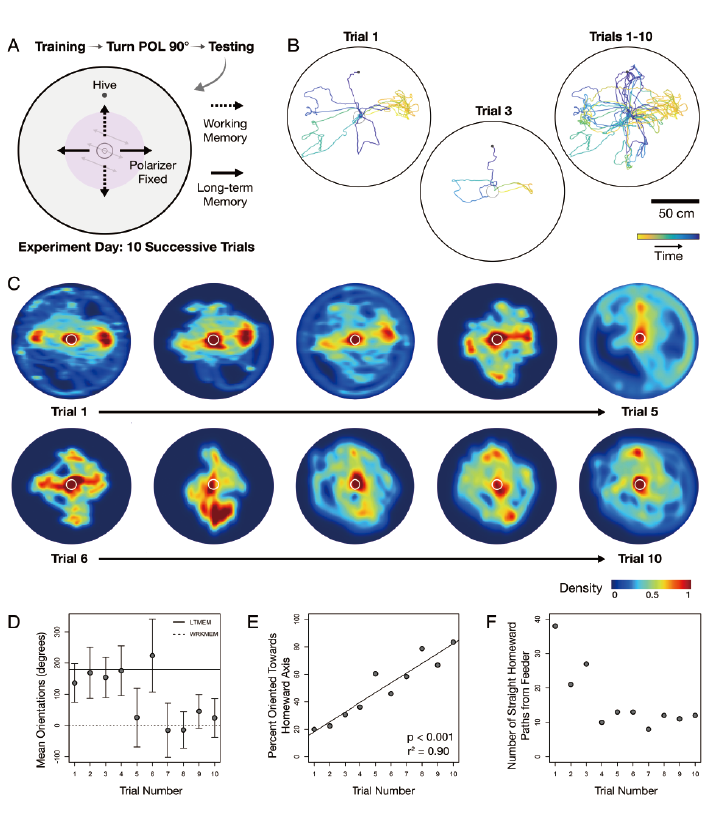Insects
rely on path integration (vector-based navigation) and landmark guidance to
perform sophisticated navigational feats, rivaling those seen in mammals. Bees
in particular exhibit complex navigation behaviors including creating optimal
routes and novel shortcuts between locations, an ability historically
indicative of the presence of a cognitive map. A mammalian cognitive map has
been widely accepted. However, in insects, the existence of a centralized
cognitive map is highly contentious.
Rickesh
N. Patel and colleagues from Lund University in Sweden conducted a path
selection experiment on bumblebees in the laboratory, and their findings were
recently published in PNAS. The study altered the bumblebees' visual direction
recognition by adjusting polarized light indoors and shortened their wings to
reduce their activity range. Following the classical navigation experiment
procedure, bumblebees were released at different points near their nest
entrance, feeder, and along their walking path, with their movement
trajectories recorded. The results showed that bumblebees could store vector
information from multiple path origins in long-term memory and recall these
vectors at familiar locations to guide navigation. The homeward path of the
bumblebees must rely on previously accumulated and long-term stored vector
information, as they are unable to navigate home via unfamiliar routes. This
research further supports the theory that insects navigate based on path
integration, in line with the concept of decentralized cognitive map
navigation.

https://doi.org/10.1073/pnas.2402509121
|







